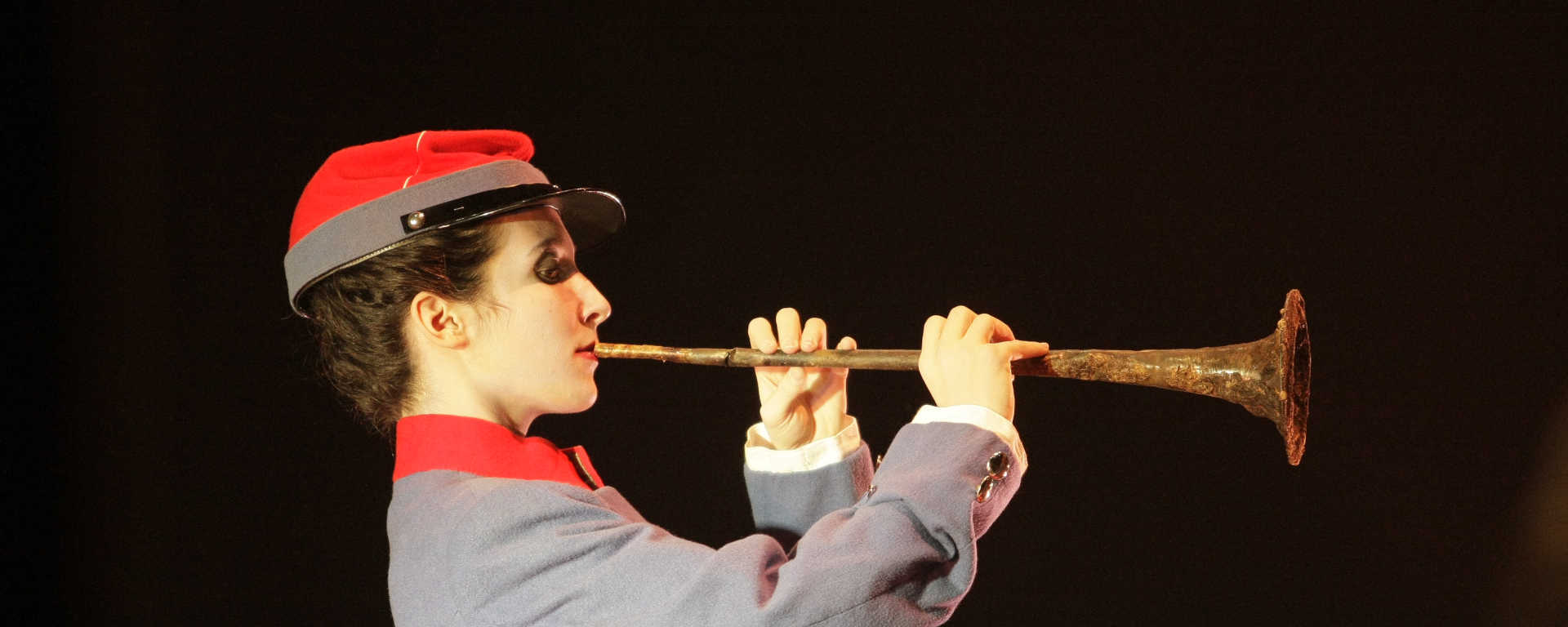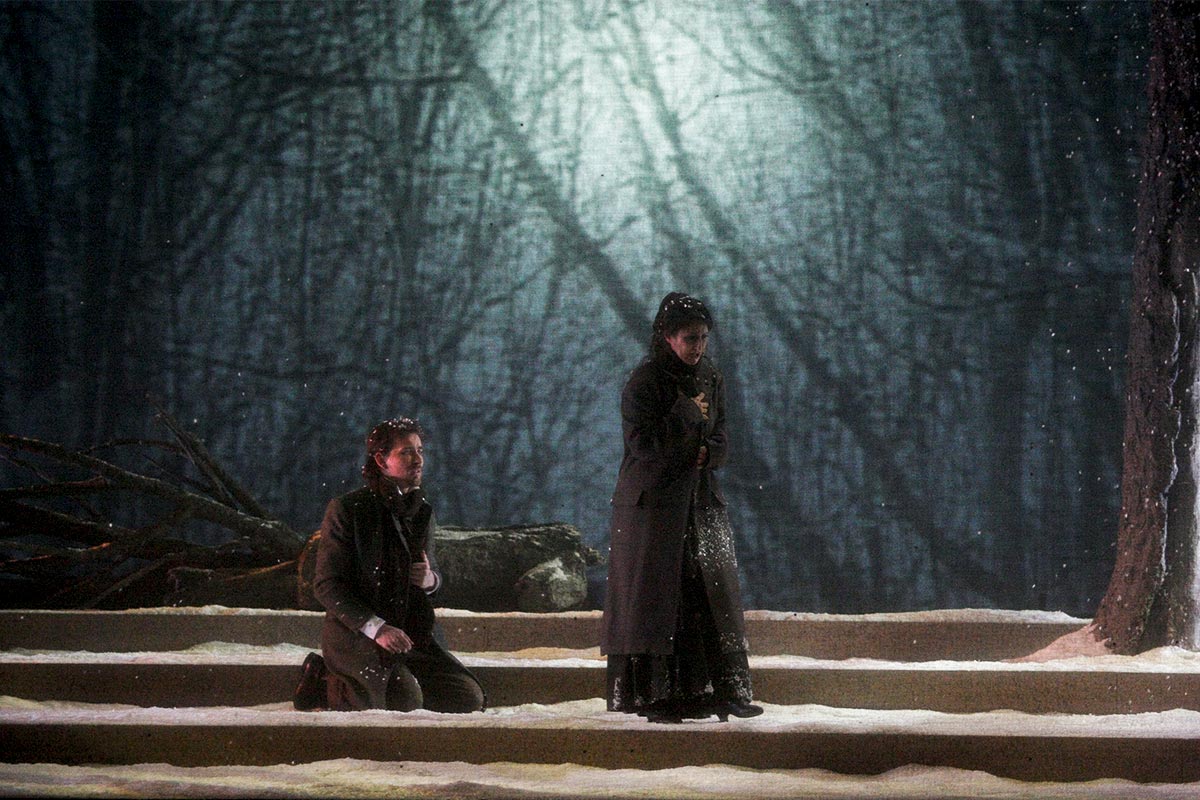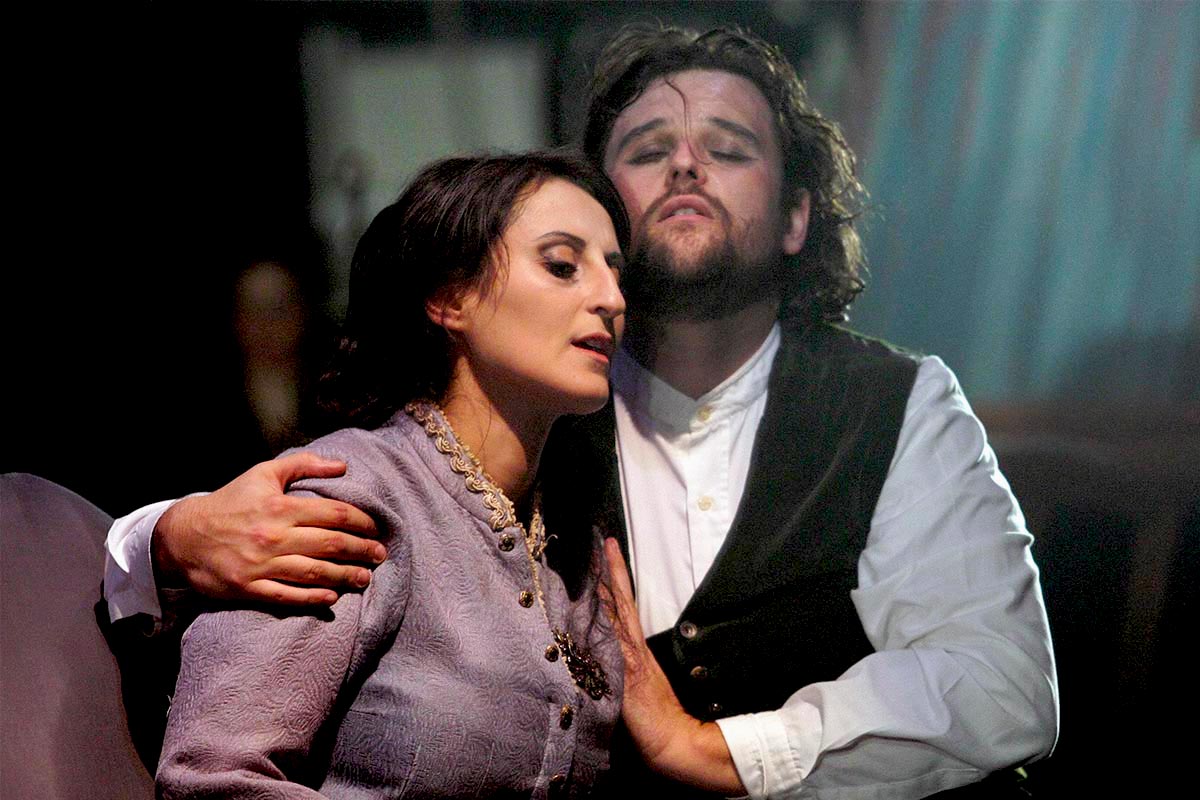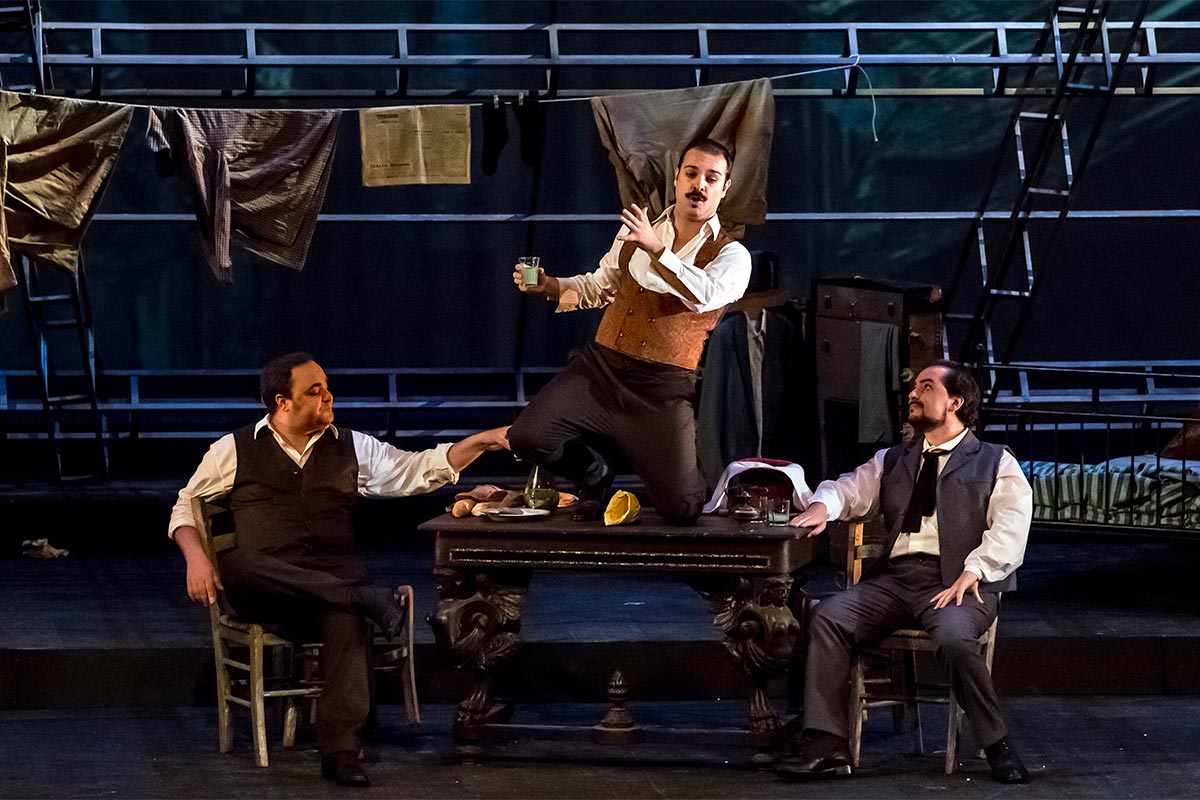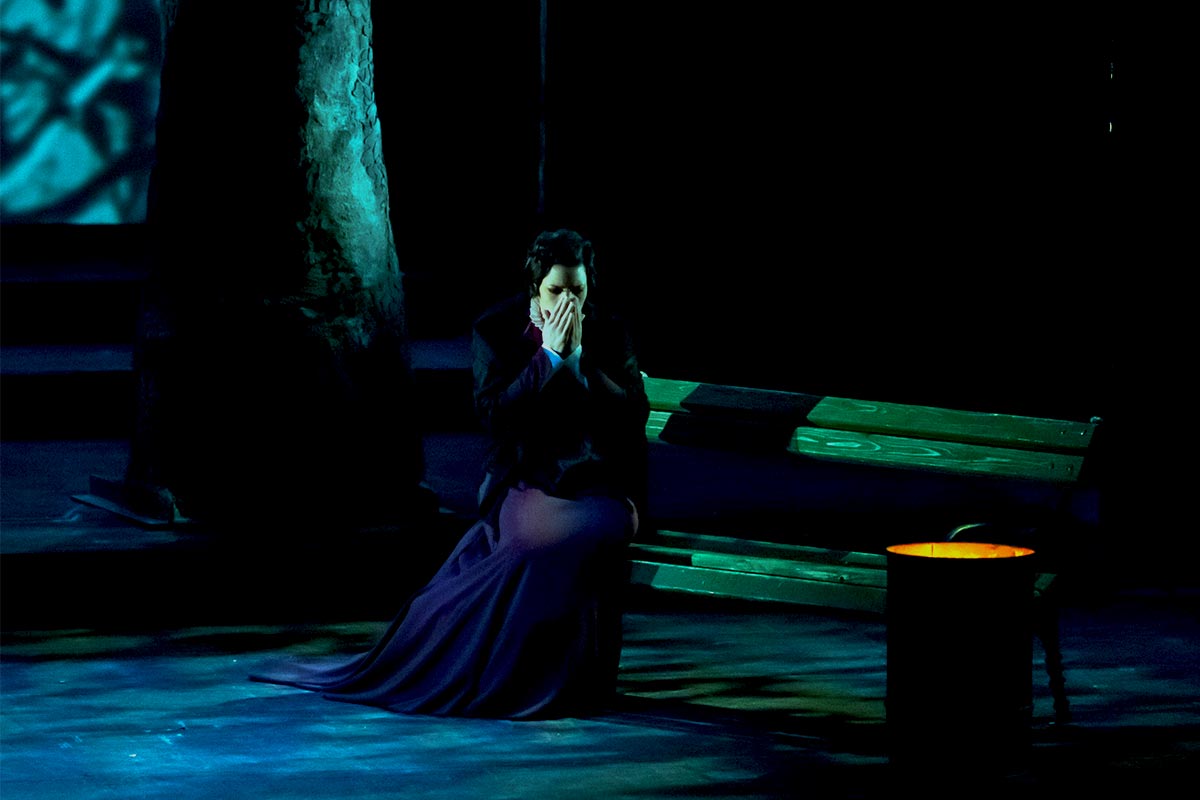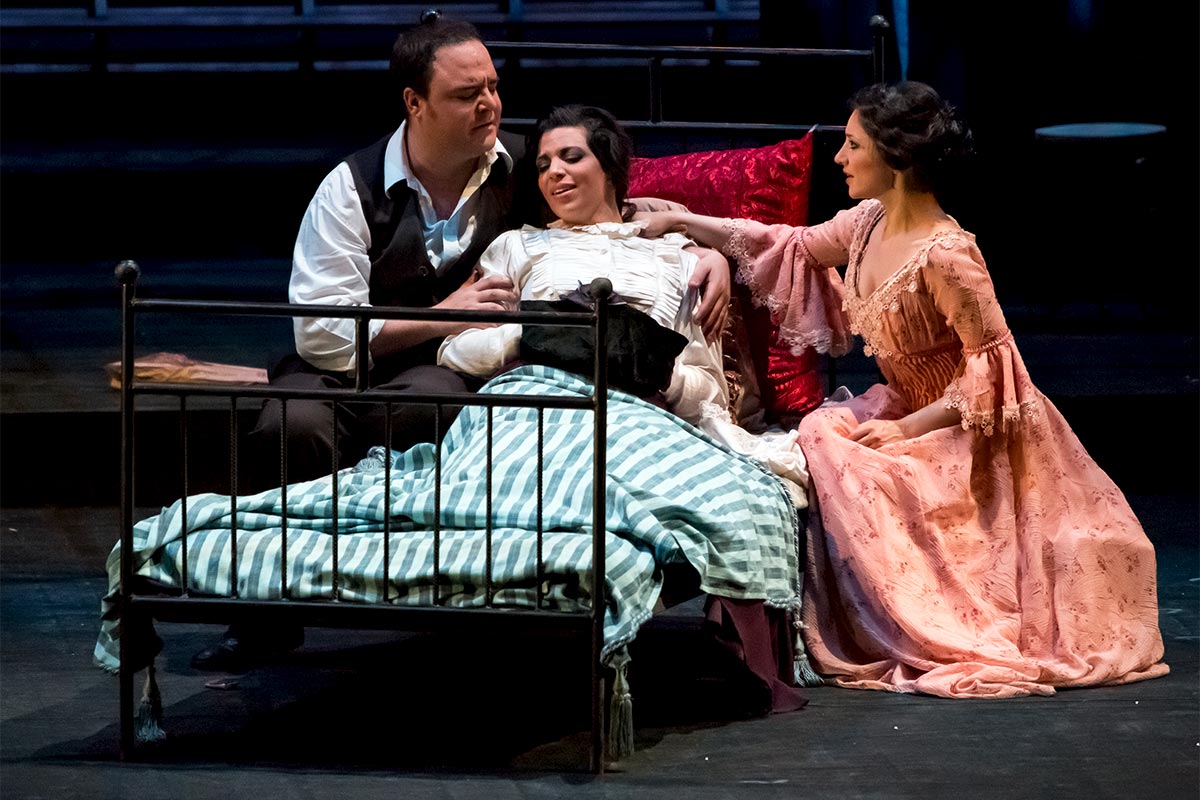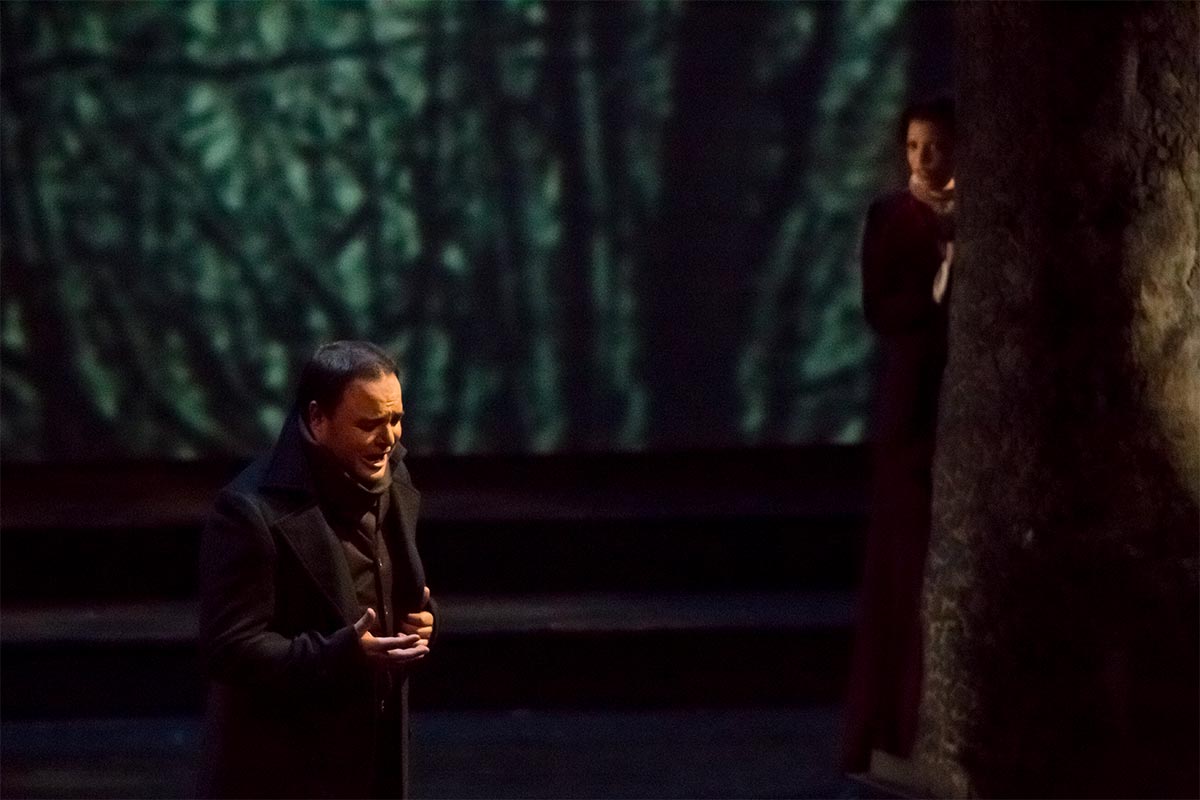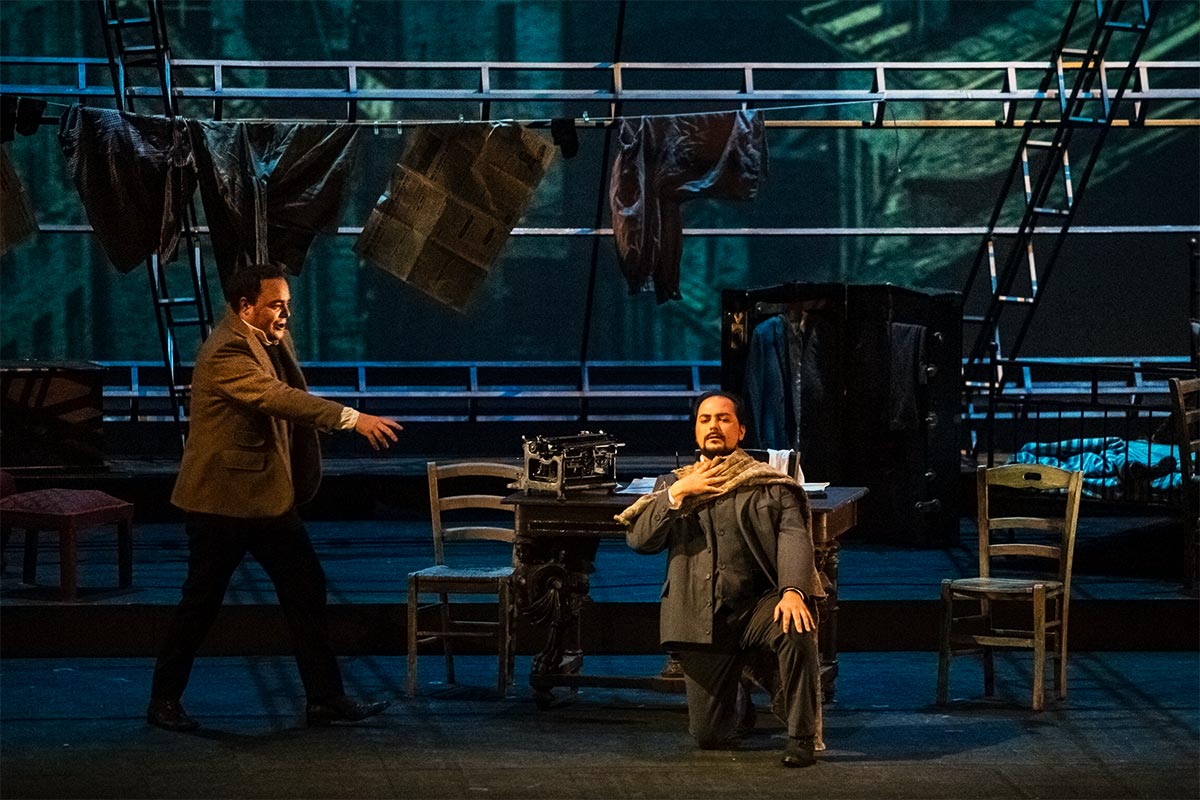Giacomo Puccini
La bohème
La bohème is the opera that, more than any other title I’ve had the pleasure of producing or directing, I feel most strongly about.
Fortunately, I have had the pleasure of tackling Puccini’s masterpiece on several occasions. Among all of them, I remember with greater affection and also a bit of nostalgia the one related to my debut in the title, at the Ventidio Basso Theater of Ascoli Piceno in 2009. That edition marked, besides my own, the debut of several of the main performers, as well as of Giuseppe Sabbatini as conductor after his brilliant career as a tenor, which had just ended, and which had brought him to the stages of the most important theaters in the world. I believe today that this particular factor, together with the ties that had been forged within the company during the production, contributed to generating a growing energy that exploded into a whirlwind of feelings on the very day of the debut.
cast

Giuseppe Sabbatini

Carlo Palleschi

Cristina Giannelli

Jessica Rose Cambio

Lilia Piven

Angela Nisi

Jean-François Borras

Salvatore Cordella

Valdis Jansons

Alessio Potestio

Davide Bartolucci

Italo Proferisce

Alessandro Spina

Mauro Corna

Angelo Nardinocchi
creators
Giacomo Puccini (1858–1924) was immensely popular in his own lifetime, and his mature works remain staples in the repertory of most of the world’s opera companies. His librettists for La Bohème, Giuseppe Giacosa (1847–1906) and Luigi Illica (1857–1919), also collaborated with him on his next two operas, Tosca and Madama Butterfly. Giacosa, a dramatist, was responsible for the stories and Illica, a poet, worked primarily on the words themselves.

Giacomo Puccini
Stage director
Costume designer
set designer
lighting designer
producers
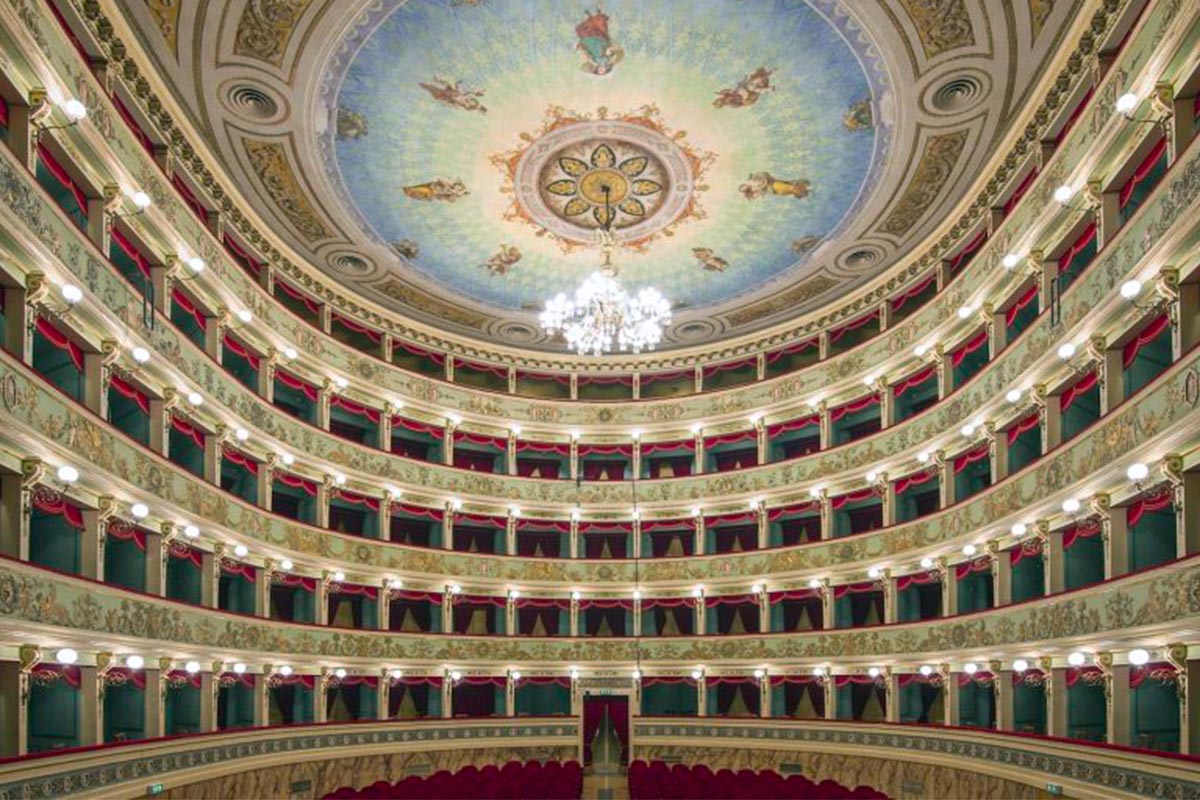
The Ventidio Basso theater is the communal theater, concert hall, and opera house, located on via del Trivio, in front main cloister of the church of San Francesco, near piazza del Popolo, in the city of Ascoli Piceno region of Marche, Italy. The exterior was erected in neoclassical-style, with grand interiors.
Ascoli Piceno had a communal theater since 1579, located at the site of the palazzo Anzianale.
The theater is named by Ventidio Basso, local made prisoner during the Social Wars of the Roman Republic. He became a military and political leader for Julius Caesar and Marc Antony. Ventidio has honored with a triumph for a victory against the Parthians in 38-39 B.C.
The Politeama Theater of Catanzaro was inaugurated on November 29, 2002.
The theater is part of the ancient city theatrical tradition that began with the Teatro Comunale, formerly the Real Teatro San Francesco, opened in 1830 and demolished in 1938. It stands in the historic center, 321 meters above sea level, in the area of the Politeama Italia cinema-theater.
In 2016 it was named after Mario Foglietti, director, journalist and writer from Catanzaro.
The theater is the work of the architect Paolo Portoghesi.
The central hall in the shape of a horseshoe, around which the building is divided, takes up the tradition of classical Italian theater.
The stalls can accommodate 380 spectators while the five tiers of boxes can hold 550.
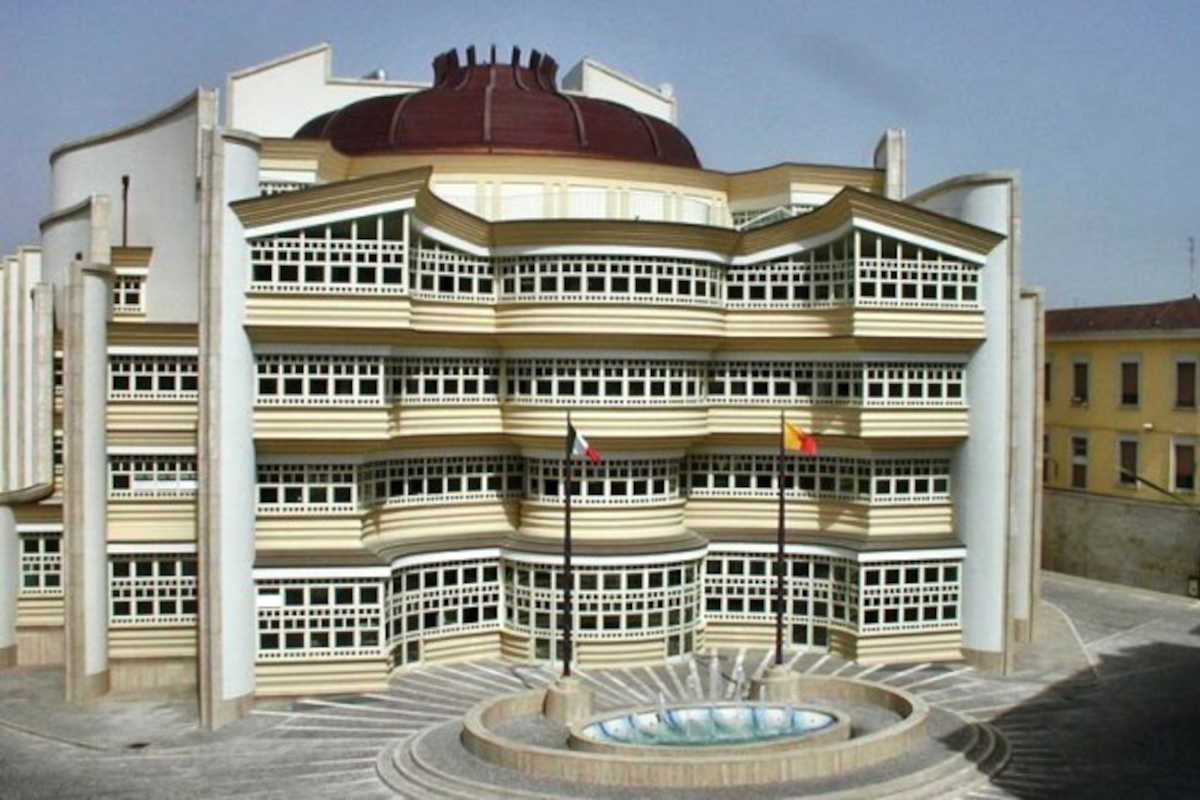
photos & videos
notes
Prerogative of this production of La bohème would like to be the concept of ideal, ethically understood as good, in other words, what appears desirable enough to be conceived as the ultimate goal of our existence.
The six protagonists therefore become the interpreters of a search for freedom, beauty, love and truth that, in constant conflict with the conformity of the world they dislike, will lead to a “revelation”, through the dissolution of their ideal itself. The deep affinity and love that binds the characters of Mimì and Rodolfo, arises through the identification in the fragile figure of her of the value of that ideal, of that ultimate goal, and in him, with the aspiration to the introjection of that ideal.
The figure of Mimì is, in fact, the casket of that ideal, fragile in front of the oppressive rigors of a daily reality. Puccini presents this character, unlike Francine in Murgier’s writing, as an emblem of that fragile femme, of that small, delicate girl, with white skin and small hands: “…whiter than those of the goddess of idleness”.
Rodolfo, the poet, the impulse of that link between art and life, in search of his ultimate goal: Mimì.
Rodolfo: Who am I? – I am a poet. What do I do? – I write. And how do I live? – I live.
The scenic setting as well as the costume assume within this vision and during the succession of time and events, not only an illustrative purpose but also a division between dream and reality. Where the attic will become the expression of the constant conflict between the protagonists and the outside world, in the dual role of illusory refuge and prison of their dreams, and the skylight, the lens on a divergent world but also the network of bars that exile them from that world, in the second and third act will become respectively, the expression of abstraction, purity of the dream and apparent achievement of the ideal and the rationalization of these utopias.
Marcello: O bella età d’inganni e d’utopie! Si crede, spera e tutto bello appare. (O beautiful age of deceptions and utopias! One believes, hopes and everything beautiful appears.)
Rodolfo: La più divina delle poesie è quella, amico, che c’insegna amare! (The most divine of poems is the one, friend, that teaches us to love!)
The first picture will therefore become that of Freedom, the second that of Beauty, the third that of Love and finally that of Truth.
